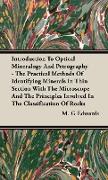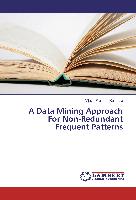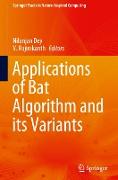Introduction To Optical Mineralogy And Petrography - The Practical Methods Of Identifying Minerals In Thin Section With The Microscope And The Principles Involved In The Classification Of Rocks
BücherAngebote / Angebote:
Originally published in 1916. INTRODUCTION - To Optical Mineralogy and Petrography The Practical Methods of Identifying Minerals in Thin Section With the Microscope and The Principles Involved in The Classification of Rocks - PREFACE: IN THE preparation of this volume the writer has attempted to gather together and systematize in a manner accessible for ready reference those facts which are essential to a field geologist or to a mining engineer in an understanding of the fundamental principles involved in the classification and identification of rocks. In the field, a preliminary classification is usually made by macroscopic means. However, it is often necessary to make a more careful classification by a microscopic examination of a thin section of the minerals comprising the rock mass. To do this successfully requires a knowledge of the application of light to crystalline substances. This volume differs from most of the reference and text books relating to this subject in that it incorporates in one volume the elements of optical mineralogy and the elements of petrography. In Part One, eight general operations for the determination of unknown minerals in thin section are described, prefaced by a short summary of the principles of optics which apply to the transmission of polarized light through minerals. Descriptions of fiftyeight of the most common of the rock-making minerals are given, special attention being given to the criteria for the determination of these minerals in thin section. Their form, cleavage, twinning, color, refringence, bi refringence, extinction angles, pleochroism, absorption, optical character, inclusions, alterations, occurrences, uses, and differentiation from similar minerals, are all discussed whenever applicable. An elementary knowledge of crystallography and descriptive mineralogy is assumed. In Part Two, the principles of petrography are discussed briefly. Attention is given to the classification and description of the more important igneous rock types. Following Iddings, Winchell, and other American petrographers, the symbols X, Y, and Z, are here employed in referring to the axes of ether elasticity, instead of the German a, b, and c, used in many text and reference books. This is done to avoid confusion, especially in conversation or discussion, with the crystallographic axes. 2 The writer is indebted to Professor Frank R. Van Horn for suggestions. Among the reference and text books most frequently consulted the writer wishes to acknowledge Winchells Elements of Optical Mineralogy, Johannsens Manual of Petrographic Methods, Luquers Minerals in Rock Sections, Rogerss Study of Minerals, Findlays Igneous Rocks, Kemps Handbook of Rocks, Ries and Watsons Engineering Geology, and Farrells Practical Field Geology. Cleveland, Olzio, Februarp, 1916. Contents include: INTRODUCTION. PAGE PART ONE. - OPTICAL MINERALOGY. CHAPTER 1 . - THE ELEMENTS O F OPTICS A ND THE APPLICATIO O N F POLARIZELDI GHT T O CRYSTALLINE SUBSTANCES .. .............................. 13 The Nature of Light - Isotropic and Anisotropic Media - Uniaxial and Biaxial Crystals - Index of Refraction - Double Refraction - Interference - Polarization. CHAPTER 2. - THE POLARIZINMGI CROSCOP A E N D ITS PARTS ...................................... 25 Microscope - Nicol Prisms - Condensing Lens - Cross Hairs - Stage - Mirror - Objective - Rertrand Lens - Ocular Micrometer - Ad j ustment Screws. CHAPTER 3 . - GENERALM ETHODS O F MINERALD E TERMINATION ............................... 33 1. By the General Physical Properties 2...
Folgt in ca. 15 Arbeitstagen




